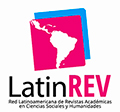Translation corpora in contrastive research, translation and language learning
DOI:
https://doi.org/10.11606/issn.2317-9511.tradterm.2004.47047Keywords:
Translation corpora, contrastive grammar, language learning, auxiliaries, modality, catenatives.Abstract
This article looks at the role of translation corpora in all fields of comparative language studies. Over the last decade, corpus linguistics has expanded into a new, powerful and easily accessible methodology, which has brought new impulses to many older sub-disciplines of linguistics. Thus, translation corpora have revitalised all comparative or cross-language studies, since they can be used profitably in contrastive linguistics and translation studies as well as in language teaching and learning. Translation corpus studies are particularly popular among non-native speakers of English, as they offer a sound basis for language analysis that does not depend on introspection. Because they combine a qualitative and a quantitative perspective, they are particularly interesting for gradient phenomena, like the auxiliary-catenative-full verb cline that provides the empirical test field in much of this contribution. The opportunities offered by translation corpora are illustrated using examples from the Chemnitz English-German translation corpus, mainly in three case studies of auxiliary help, catenative appear/seem, and modal may/might.
Downloads
Downloads
Published
Issue
Section
License
Autores que publicam nesta revista concordam com os seguintes termos:
- Autores mantém os direitos autorais e concedem à revista o direito de primeira publicação, com o trabalho simultaneamente licenciado sob a Licença Creative Commons Attribution BY-NC-SA que permite o compartilhamento do trabalho com reconhecimento da autoria e publicação inicial nesta revista.
- Autores têm autorização para assumir contratos adicionais separadamente, para distribuição não-exclusiva da versão do trabalho publicada nesta revista (ex.: publicar em repositório institucional ou como capítulo de livro), com reconhecimento de autoria e publicação inicial nesta revista.
- Autores têm permissão e são estimulados a publicar e distribuir seu trabalho online (ex.: em repositórios institucionais ou na sua página pessoal) a qualquer ponto antes ou durante o processo editorial, já que isso pode gerar alterações produtivas, bem como aumentar o impacto e a citação do trabalho publicado (Veja O Efeito do Acesso Livre).








